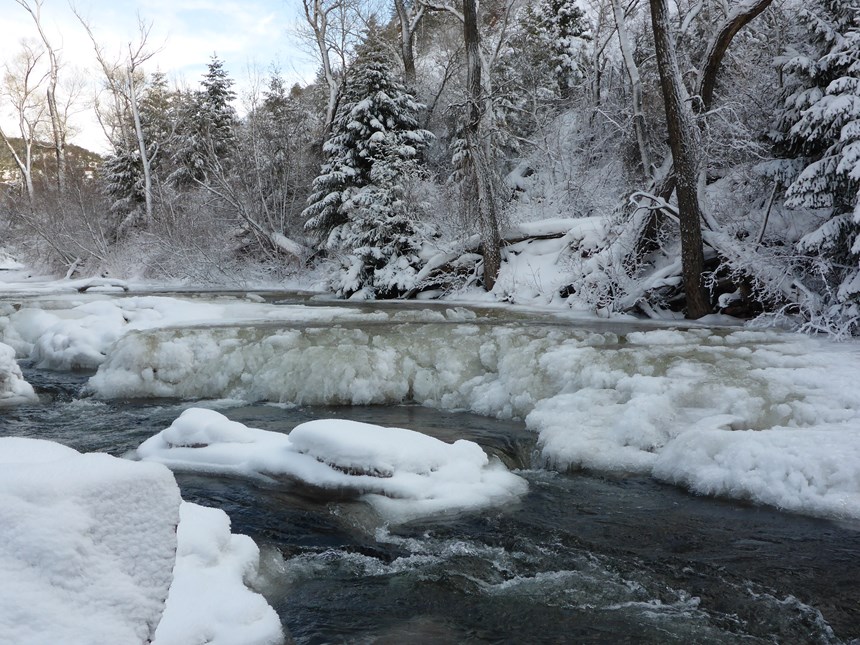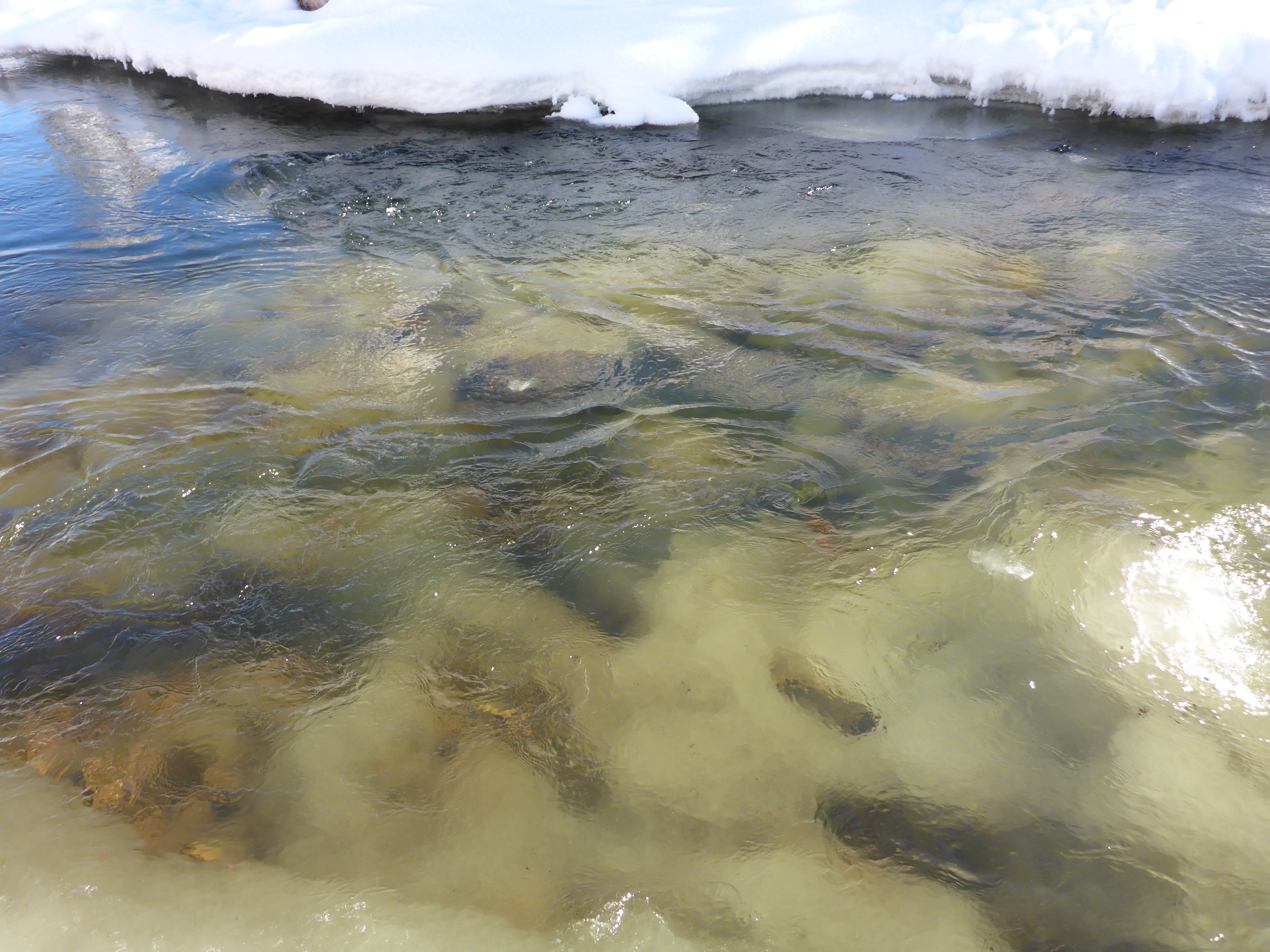Anchor ice is a fascinating river phenomenon. Anchor ice forms below the surface of the water and attaches to the bottom of the river, which may seem counterintuitive since ice floats. The combination of supercooled (below 0°C) water and the turbulence of a flowing river allow this unique and beautiful natural occurrence. Anchor ice can be seen in many local streams during the colder months of the year. While often stunning to observe, anchor ice in the Fryingpan River has drawn the attention of RFC staff and local anglers due to concerns that the ice can occupy interstitial spaces - the areas between rocks - that serve as essential macroinvertebrate habitat, and potentially cause a detrimental scouring to the streambed when it releases.
In the fall of 2020, RFC staff, with special help from intern Shay Austin, worked with Dr. Ed Kempema, a Senior Research Scientist at the University of Wyoming, to create a novel, objective approach to document and track anchor ice over time to better understand the factors affecting its formation in local rivers. This study was piloted on the Lower Fryingpan River last winter, an area with previously recognized anchor ice impacts, but absent data to correlate presence, timing, and location. Results from 2021, combined with future studies and observations will ultimately provide valuable information to allow RFC to advocate for management practices of Ruedi Reservoir and the lower Fryingpan beneficial to local stream ecology.
From December 2020 through March 2021, staff spent 32 days in and along the banks of the Fryingpan monitoring anchor ice at six different sites. During this time, anchor ice presence was observed 13 out of 32 survey days. A notable decrease in anchor ice began in the second half of January 2021 and continued through the end of the study period. This decrease in anchor ice aligned with increases in water temperature, air temperature, and stream flow rate. The results from this initial period of anchor ice monitoring provide a strong basis for future studies, and RFC will continue to modify and improve the protocols and methodologies to strengthen the integrity of the data moving forward. RFC intends to continue the study in subsequent years to provide more data necessary to illuminate trends and draw clear conclusions about the influence of water temperature, air temperature, and stream flow rate on anchor ice formation in the lower Fryingpan River.

